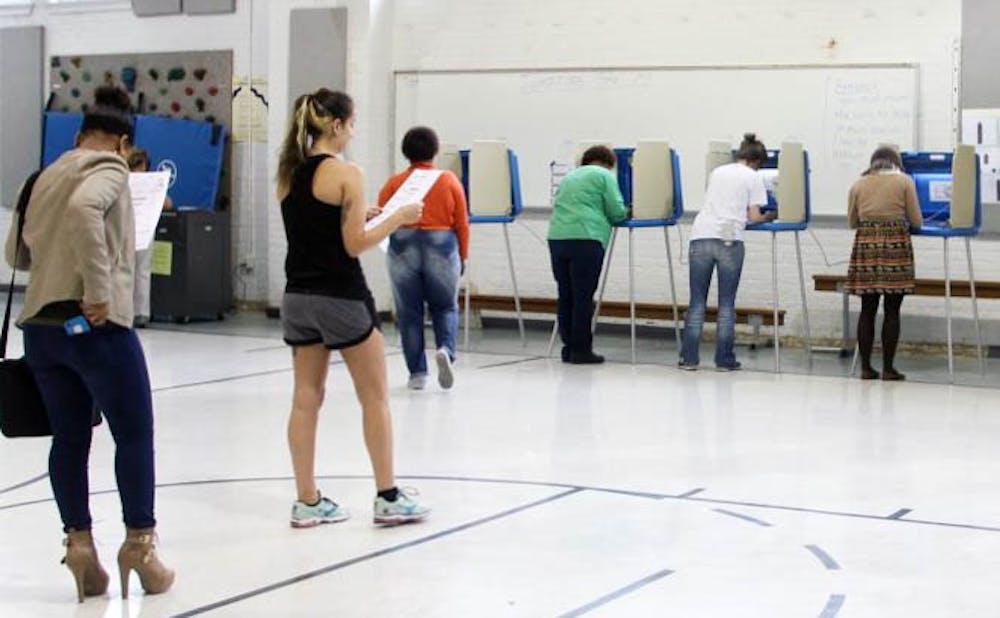Public opinion polling is facing new challenges in the digital age.
North Carolina is poised to be a tight swing state in the upcoming election, with Clinton up by two points in a four-way horse race in the most recent poll by Public Policy Polling. This is reflected in the campaign battlefield with both Trump and Clinton increasing their campaign ad airtime across North Carolina. Although public opinion polls can be used to show what proportion of the given population has a specific viewpoint, experts noted that this poses challenges.
“It is increasingly difficult to get truly random samples, mainly because people are reluctant to respond to polls,” said Jerry Reiter, professor of statistical science. “At the same time, big data from social media and online surveying offer potentially huge sample sizes, but with a significant risk that the resulting data are not representative of the whole population.”
Reiter noted that opinion polling data can be useful for candidates and their campaigns in determining how to allocate resources.
“For example, when polls suggest a presidential candidate is highly unlikely to win a particular state, that candidate may forego spending money on ads and events there,” he said.
The two most common ways in which public opinion polls are conducted are telephone and face-to-face interviews, according to the Gallup organization. Representative samples are done to make generalizations about a specific population, and scientific polls are usually conducted using geographic-area probability sampling, also referred to as “block sampling.”
Block sampling is conducted by dividing a population into blocks of equal population density, which are additionally divided until one household is chosen at random, according to Gallup. Then, a single respondent is chosen.
Reiter said to take caution when interpreting polling data because a variety of factors can contribute to errors.
“Estimates from opinion polls, especially for elections, involve many subjective decisions by the pollster,” Reiter said. “These include how the pollster handles missing values, how the pollster decides to infer from the sampled cases to the population and how the pollster decides who in the sample is likely to vote… These decisions are hidden from the public, making it impossible for the public to evaluate or completely understand what the numbers mean.”
He also cautioned against trusting online polls, especially from organizations without professional pollsters on staff. The samples from online polls may reflect only those who frequent the website, and are not representative of the whole population.
An internal memo at Fox News raised those very points after the first presidential debate, telling staff that such online polls "do not reflect our editorial standards."
“Don't be influenced too much by any one poll result—any one poll has a lot of uncertainty due to both chance errors and systematic errors,” Reiter said. “Looking at many poll results gives you a better sense of where the race is.”
Nate Silver’s FiveThirtyEight is one example of such a polling aggregation website that uses statistical analysis on polling data to give a more comprehensive story. As Nate Silver detailed, the FiveThirtyEight model prioritizes the many state polls over national polls. Furthermore, these polls are adjusted along different parameters such as accounting for state-to-state correlated error.
“If a candidate beats his polls to win Ohio, there’s a good chance he’ll also do so in Pennsylvania,” Silver explained in a blog.
The future of election polling is may strongly involve statistical analysis on aggregate data, Reiter noted.
“Students trained in statistical methods, computer science and the social sciences will have the opportunity to make significant contributions to the future of scientific polling,” he said.
According to the current FiveThirtyEight forecast for the presidential election, Hilary Clinton has a 66.7 percent chance of winning and Donald Trump has a 33.3 percent chance of winning.
Get The Chronicle straight to your inbox
Signup for our weekly newsletter. Cancel at any time.

